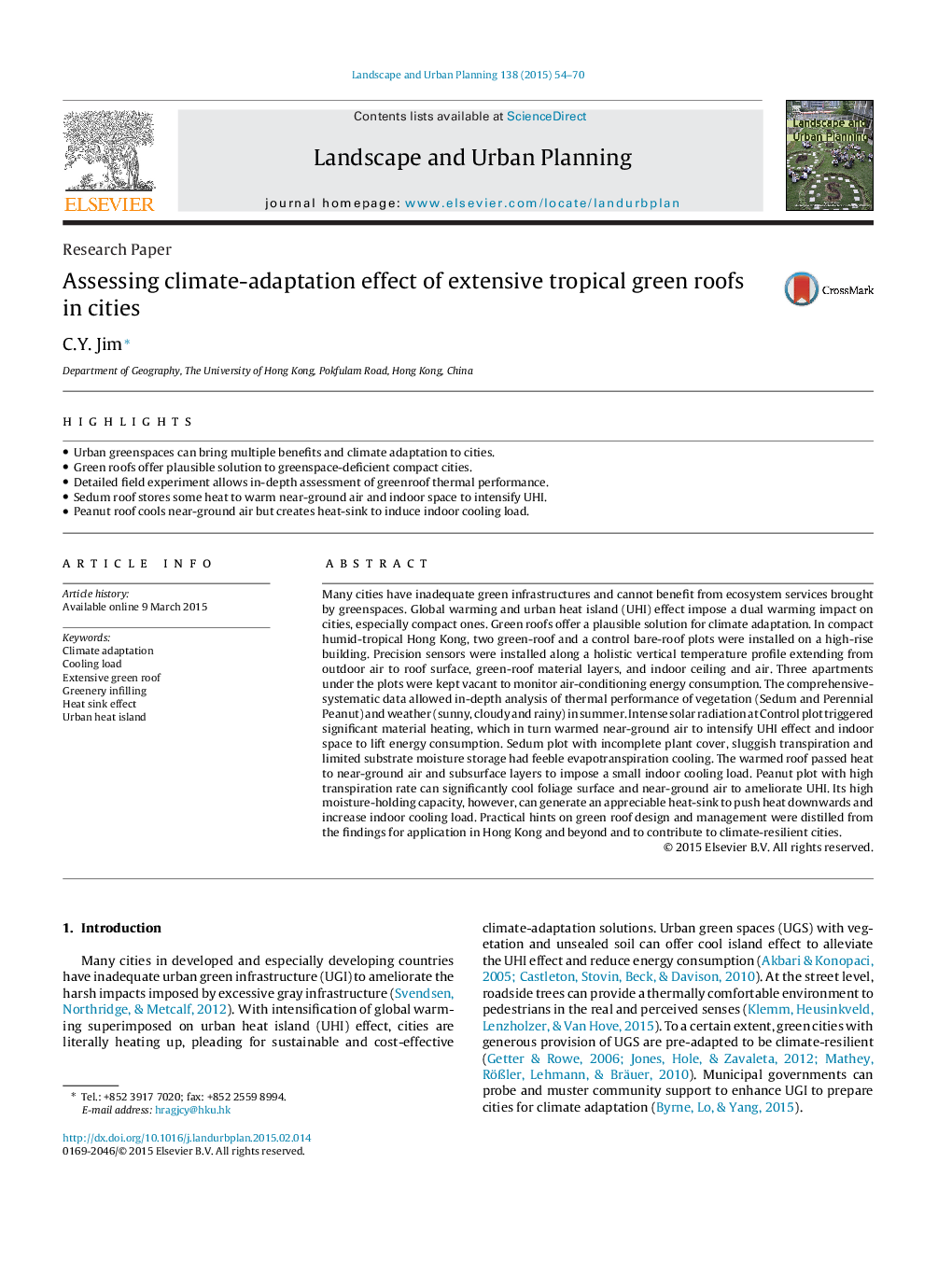| Article ID | Journal | Published Year | Pages | File Type |
|---|---|---|---|---|
| 1049120 | Landscape and Urban Planning | 2015 | 17 Pages |
•Urban greenspaces can bring multiple benefits and climate adaptation to cities.•Green roofs offer plausible solution to greenspace-deficient compact cities.•Detailed field experiment allows in-depth assessment of greenroof thermal performance.•Sedum roof stores some heat to warm near-ground air and indoor space to intensify UHI.•Peanut roof cools near-ground air but creates heat-sink to induce indoor cooling load.
Many cities have inadequate green infrastructures and cannot benefit from ecosystem services brought by greenspaces. Global warming and urban heat island (UHI) effect impose a dual warming impact on cities, especially compact ones. Green roofs offer a plausible solution for climate adaptation. In compact humid-tropical Hong Kong, two green-roof and a control bare-roof plots were installed on a high-rise building. Precision sensors were installed along a holistic vertical temperature profile extending from outdoor air to roof surface, green-roof material layers, and indoor ceiling and air. Three apartments under the plots were kept vacant to monitor air-conditioning energy consumption. The comprehensive-systematic data allowed in-depth analysis of thermal performance of vegetation (Sedum and Perennial Peanut) and weather (sunny, cloudy and rainy) in summer. Intense solar radiation at Control plot triggered significant material heating, which in turn warmed near-ground air to intensify UHI effect and indoor space to lift energy consumption. Sedum plot with incomplete plant cover, sluggish transpiration and limited substrate moisture storage had feeble evapotranspiration cooling. The warmed roof passed heat to near-ground air and subsurface layers to impose a small indoor cooling load. Peanut plot with high transpiration rate can significantly cool foliage surface and near-ground air to ameliorate UHI. Its high moisture-holding capacity, however, can generate an appreciable heat-sink to push heat downwards and increase indoor cooling load. Practical hints on green roof design and management were distilled from the findings for application in Hong Kong and beyond and to contribute to climate-resilient cities.
